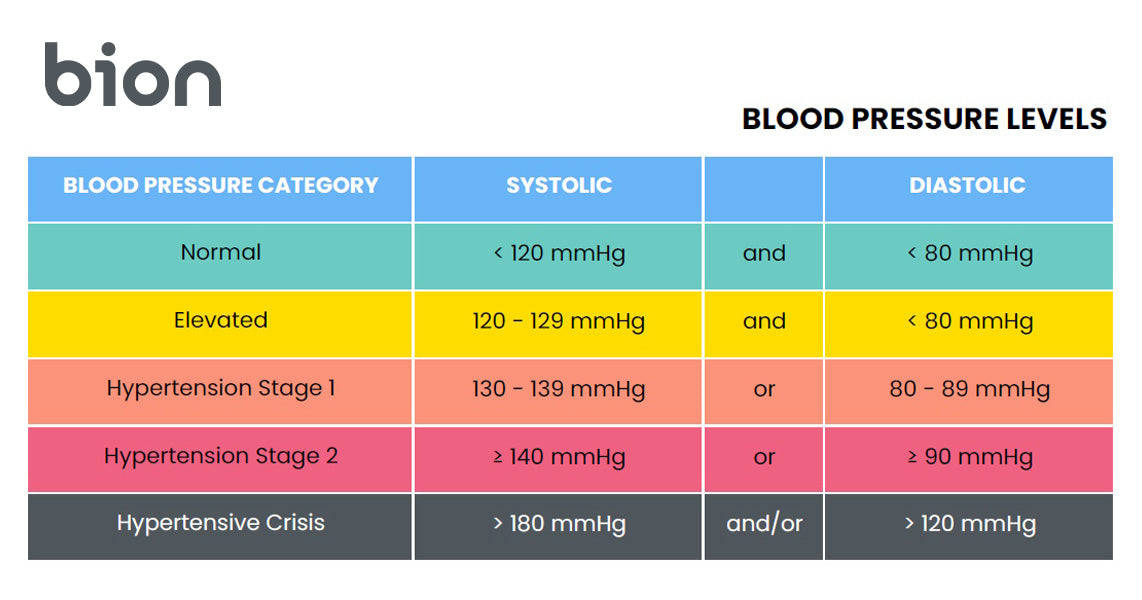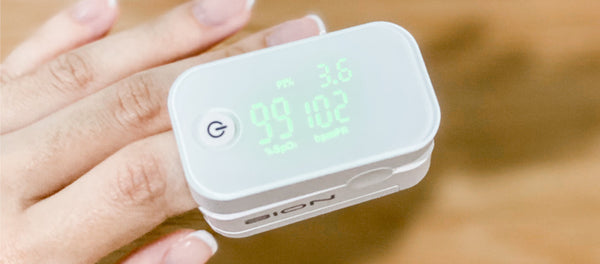Why is it important to know your blood pressure?
High Blood Pressure is the number 1 contributing risk factor for strokes, heart attacks and other cardiovascular complications that leads to death.
“In Singapore, 1 in 4 people aged 30 – 69 has high blood pressure, while 17 people die from heart disease and stroke everyday” - Mount Elizabeth Hospitals
The good news is high blood pressure is a health condition that is preventable with hard work. Therefore, we need to have our blood pressure numbers checked regularly so that it if it occurs, it can be detected early and prevented at the early stage.
What is High Blood Pressure
High blood pressure also known as hypertension is a health condition whereby the force of blood on the walls of your arteries is too high.
There are two chambers in your heart called ventricles that contract with each heartbeat to push blood to your lungs and through your arteries to your body.
Arteries and blood vessels in your body are responsible for carrying oxygenated blood away from your heart to supply your tissues with oxygen and nutrients.
As blood flows through your arteries, there are three main factors that affects the pressure on your artery walls.
1. Cardiac output
The volume of blood your ventricles push out of your heart each minute. As cardiac output increases, your blood pressure goes up.
2. Blood volume
The total amount of blood circulating in your body. As your blood volume increases, your blood pressure would also go up.
3. Resistance
There are several factors which affects the flexibility of your artery wall. If your arteries are healthy, it can expand with each heartbeat to help reduce blood pressure on the wall.
What are the risks of uncontrolled high blood pressure?
Uncontrolled high blood pressure will damage the walls of your arteries. Over time, your artery wall may become weak and cause small tears in your artery wall which may trap certain substances such as fat, cholesterol, and calcium and develop plaque in the arteries. As the plaque enlarges, blood flow in your arteries deceases.

Fig. 1 represents an unhealthy artery with build-up plaque and blood clots.
This phenomenon could cause blood cells to stick to the plaque and form solid clumps of blood clots called thrombus which could further reduce or block your blood flow completely.

Fig. 2 Thrombus blocks the flow of blood in the artery.
Artery damage and reduced blood flow leads to the risk of several serious life-threatening health complications such as:
- Stroke
- Heart failure
- Heart disease
- Kidney disease
- Sexual Dysfunction
- Peripheral artery disease
- Aortic aneurysms
- Vascular dementia
- Resistant Hypertension
How to measure and read blood pressure numbers
You can measure your blood pressure with a Sphygmomanometer, or Home use blood pressure monitors.
Blood Pressure (BP) is readings are expressed based on 2 readings. Systolic and Diastolic; in units of millimetre of mercury (mmHg).

Fig. 3 Bion Automatic Blood Pressure Monitor B100
Readings
Systolic (SYS mmHg)
Systolic pressure indicates how much pressure your blood is exerting against your artery walls when the heart beats.
Diastolic (DIA mmHg)
Diastolic pressure indicates how much pressure your blood is exerting against your artery walls while the heart relaxes between beats.
What’s normal blood pressure and what’s high blood pressure?
While your blood pressure fluctuates throughout the day, it should normally be less than 120/80 mmHg, commonly verbally expressed as “120 over 80”. If your systolic and diastolic pressure frequently stays above 140/90mmHg you have high blood pressure.

Table 1. Categories of Hypertension. For subjects who are not taking any antihypertensive medication and not acutely ill. When the systolic BP and the diastolic BP fall into different categories, the higher category applies.
What does pulse rate indicates?
Pulse rate indicates the regularity of your heart’s rate and rhythm. If your arteries are narrow or obstructed, your heart must beat faster to pump blood through your vessels. Pulse rate typically ranges from 60 to 100 beats per minute. It indicates the number of heart beats in one minute.

How to accurately measure your blood pressure at home
1. Refrain from eating, alcohol, smoking, exercising, and bathing before checking your blood pressure: Many external factors could cause your blood pressure to fluctuate. For example, if you just had a meal, an alcohol, exercise, or smoke, you should wait 30 mins before checking your blood pressure. Find a quiet room to take your blood pressure. Avoid conversations or external factors affecting your blood pressure before checking your blood pressure.
2. Take multiple measurements twice a day: Take 2 to 3 readings, at 2-minute intervals, twice a day. The first measurement should be done in the morning before your meal and medication, while the second measurement should be done in the evening. If the difference between the first and second reading is more than 5mm Hg or more, you should take a third reading and work out the average of the three readings. For example, if your first reading is 109/70, and your second reading is 111/66, followed by your third reading is 104/68, your average reading will be 108/68.
3. Position your body correctly: Here are a few tips on how you can position your body to get accurate blood pressure measurements.
Step 1: Sit up straight with a back rest (if possible) and your fleet flat on your floor or lie down for at least 3 minutes before measuring your blood pressure.
Step 2: Make sure your cuff is on bare skin and have your arm rest on the table with your palm facing upwards.
Step 3: Use a cuff of size suitable for the circumference of your upper arm as recommended by the device manufacturer.
Step 4: Ensure that the cuff is leveled with your heart.
Step 5: In elderly subjects and diabetic patients, measure the BP in the sitting (or supine) position, and within 2 minutes after standing, to record any postural fall in BP.
Step 6: While taking the measurement, avoid moving or talking.
4. Take measurements at the same time each day.
Our blood pressure fluctuates throughout the day. Taking your blood pressure at the same time each day provides you a more accurate measurement.
Home vs Clinic BP
When blood pressure (BP) is measured in clinic, the alerting response in about 1 in 4 patients can result in exaggerated BP, leading to over-diagnosis of the disorder, or to the diagnosis of isolated clinic (‘white-coat’) hypertension. Conversely, when a patient’s clinic BP is normal but the out-of-clinic BP is raised, the condition is called isolated ambulatory or out-of-clinic hypertension (‘masked’ hypertension).
Home Blood Pressure Monitoring (HBPM) is cheaper, more widely available, easily repeatable, and shows day-to-day BP variability. Where affordable, HBPM can be adopted for hypertension management to boost treatment adherence.
The bottom line
Understanding your blood pressure results is the key to controlling high blood pressure. Early detection and treatment of high blood pressure allows you to avoid life-threatening complications.
At BION, our mission is to enhance health and well-being by promoting preventive healthcare and active lifestyle. We offer a curated range of high-quality blood pressure monitors that are accurate, affordable, and easy to use.
Disclaimer
The guidelines of this article is adapted from the Singapore Ministry of Health (MOH) Hypertension Clinical Practice Guidelines 2017, which have been produced by a MOH-appointed committee of cardiologists, internists, general medicine practitioners, renal physicians, family physicians and a neurologist. They were developed by the adaptation of existing guidelines, critical review of relevant literature and expert clinical consensus taking local practice into consideration. The guidance does not override the individual responsibility of healthcare professionals to make decisions appropriate to the circumstances of the individual patient, in consultation with the patient and/or his guardian or carer.




